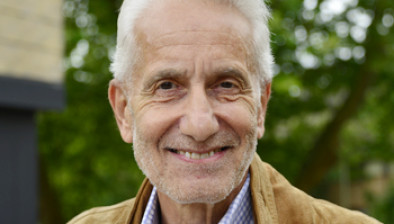High Court: Seanad cannot sit without Taoiseach’s nominees
The High Court has ruled that the Seanad can only meet after all 60 members have been elected or nominated. The Seanad is comprised of 49 elected members and eleven members have been nominated by a new Taoiseach.

About this case:
- Citation:[2020] IEHC 313
- Judgment:
- Court:High Court
- Judge:Ms Justice Mary C. Irvine
The new president of the High Court, Ms Justice Mary Irvine, sat with Ms Justice Niamh Hyland and Mr Justice Denis McDonald as a Division of the High Court. The judges said that the question of whether the Seanad can sit without the nominated senators is no longer a live one, as senators have been nominated by the new Taoiseach Micheál Martin. However, the issues were “so fully debated” before them and could arise again in the future, and it was “undoubtedly a question of exceptional public importance”, and the court decided to determine the issues raised.
Background
Senators Ivana Bacik, Victor Boyhan, Gerard Craughwell, Annie Hoey, Sharon Keogan, Michael McDowell, Rebecca Moynihan, Rónán Mullen, Marie Sherlock and Mark Wall took proceedings against An Taoiseach, Ireland and the Attorney General.
The general election for the Seanad commenced on 30 March 2020, and 49 senators were elected. The remaining eleven senators were not nominated until 27 June 2020 following the election of Mr Martin as Taoiseach. Article 18.3 provides that the nominated members of Seanad Éireann “shall be nominated, with their prior consent, by the Taoiseach who is appointed next after the re-assembly of Dáil Éireann following the dissolution thereof which occasions the nomination of the said members”.
The senators argued that Article 18.8 does not expressly provide that the first meeting of the Seanad must include the nominated members. They placed significant emphasis on the democratic nature of the State enshrined in Articles 5 and 6, and argued that the maxim ut res magis valeat quam pereat (it is better for a thing to have effect than to be void) meant that Article 18 should be interpreted in a manner which gives effect to, rather than frustrates, the democratic nature of the State.
They relied on a “literal interpretation”, with a secondary argument that in favour of a harmonious interpretation of Article 18.8 read in conjunction with the other sections of Article 18 and in conjunction with Articles 5, 6, 15 and 16, relying on the dicta of Mr Justice Henchy in Tormey v Ireland [1985] IR 289.
The Irish text, under Article 25.5.4, has primacy in the event of conflict between the Irish and English language texts. The senators referred to Bunreacht Na hÉireann: a study of the Irish text by Professor Micheál Ó Cearúil, described by Mr Justice Adrian Hardiman in Roche v Roche [2010] 2 IR 321 as work of scholarship of the highest order. Ó Cearúil observed that the Irish text in Article 18.8 translates as ‘Seanad Éireann must come together for (its) first assembly after the general election”. The senators said the word “must” mandates the holding of the Seanad’s first meeting after the Seanad’s general election. They said neither the Irish nor English text predicate the holding of the first meeting on the appointment of the eleven nominated senators.
The State argued that the Seanad must be fully constitutionally composed before it may meet. It was argued that the Seanad is not the Seanad, as constitutionally understood, without one of its two constituent parts. Séamus Wolfe SC said the words “shall be composed of” were mandatory, and relied on the judgment of Chief Justice John Murray in Curtin v Dáil Éireann [2006] 2 IR 556 that “Words denoting numbers, places or identified persons admit of no debate”. That judgment referred to the judgment of Chief Justice Tom O’Higgins in People v O’Shea [1982] IR 384 that the words of the constitution, where the meaning is plain and unambiguous, must be given their literal meaning.
He said that were a power to legislate vested in the Seanad absent the nomination of the eleven members, that would, in view of its gravity, be found “in lights” and not “hidden away” in the dark corners of the Constitution.
The State argued that the Dáil could continue to sit, to nominate a new Taoiseach, but the Oireachtas could not enact primary legislation without a fully composed Seanad. Counsel said decisions made by bodies improperly constituted are liable to be quashed by the courts as per Hegarty v Governor of Limerick Prison [1998] 1 IR 412 and Dellway Investments Ltd v NAMA [2011] 4 IR 1.
The court referenced the academic authorities. Seth Barrett Tillman, in an article in the Irish Law Times, suggested that a democratic deficit would arise were the forty-nine members absent, even if there was a quorum made up of nominated members. However, where the Seanad lacks only its nominated members, he said “… that should be a matter of little or no consequence to a democratic state”. The authors of Kelly: The Irish Constitution, 5th ed., said that it “would seem to be a constitutional lacuna that could in certain circumstances be highly problematic”. In an article in the Irish Times, 26 March 2020, Dr Oran Doyle and Dr Tom Hickey suggested an interpretation of the relevant constitutional provisions that would allow the Oireachtas to legislate in the public interest.
In Curtin, Chief Justice Murray referred to the observations of Mr Justice Henchy, who dissented in The People v O’Shea, in a passage later cited with approval by Chief Justice Ronan Keane in DPP v MS [2003] 1 IR 606, “It may be said of a constitution, more than of any other legal instrument, that ‘the letter killeth, but the spirit giveth life’. No single constitutional provision … may be isolated and construed with undeviating literalness.”
The High Court held that Article 18.1 clearly and unambiguously means that the institution, Seanad Éireann, created by the Constitution must be comprised of 60 members: “It seems to us to follow that, in the absence of some indication to the contrary, references elsewhere in the Constitution to the Seanad are to be interpreted in the same way. Having told us in Article 18.1 what the Seanad is composed of, it would be odd if other references to the Seanad in the Constitution were to be given any different meaning (again in the absence of some indication to the contrary).”
While the elected senators may be concerned to meet at the earliest opportunity, a meeting of the House without the nominated members first having been appointed would attract the principle in State (Byrne) v Frawley, where the Supreme Court rejected an argument that a jury from which women and non-rate payers had been unconstitutionally excluded was still valid because no one who was unqualified had actually served on the jury. Mr Justice Henchy said that the proposition that juries drawn from the remaining 20 per cent were valid because no ineligible persons served on them, “I find no more supportable than a proposition that an election would be valid when 80 per cent of those who should have had an opportunity of voting were barred from the polls. The essential spuriousness of such an election would not be overcome by an assertion that no ineligible persons voted”
The judges said that, despite the characterisation of the issue as a “constitutional lacuna” in the edition of Kelly, it is not accurate to so describe it: “In our view the lacuna is simply the product of the form of democracy adopted in the Constitution which proceeds on the basis that the organs of State to whom powers are conferred by the Constitution will act to give effect to them… The Constitution clearly proceeds on the basis that the elected representatives of the people will act rationally and responsibly and that they will wish to give effect to the vitally important legislative function entrusted to them under the Constitution and to ensure that, from their number, a Government is put in place. The Constitution leaves that process to the elected representatives.”
While the judges acknowledged the concerns that without a functioning Seanad it would be impossible to enact emergency legislation that might at any time be required, especially in the context of Covid-19 as sincere and genuine. However, the judges said that “considerations of that kind can be allowed to influence the interpretation of the Constitution. As the Supreme Court judgment in Curtin stresses, we are bound to interpret the Constitution by reference to its terms. We see nothing in the terms of the Constitution which would permit the convening of a partially constituted Seanad…”











